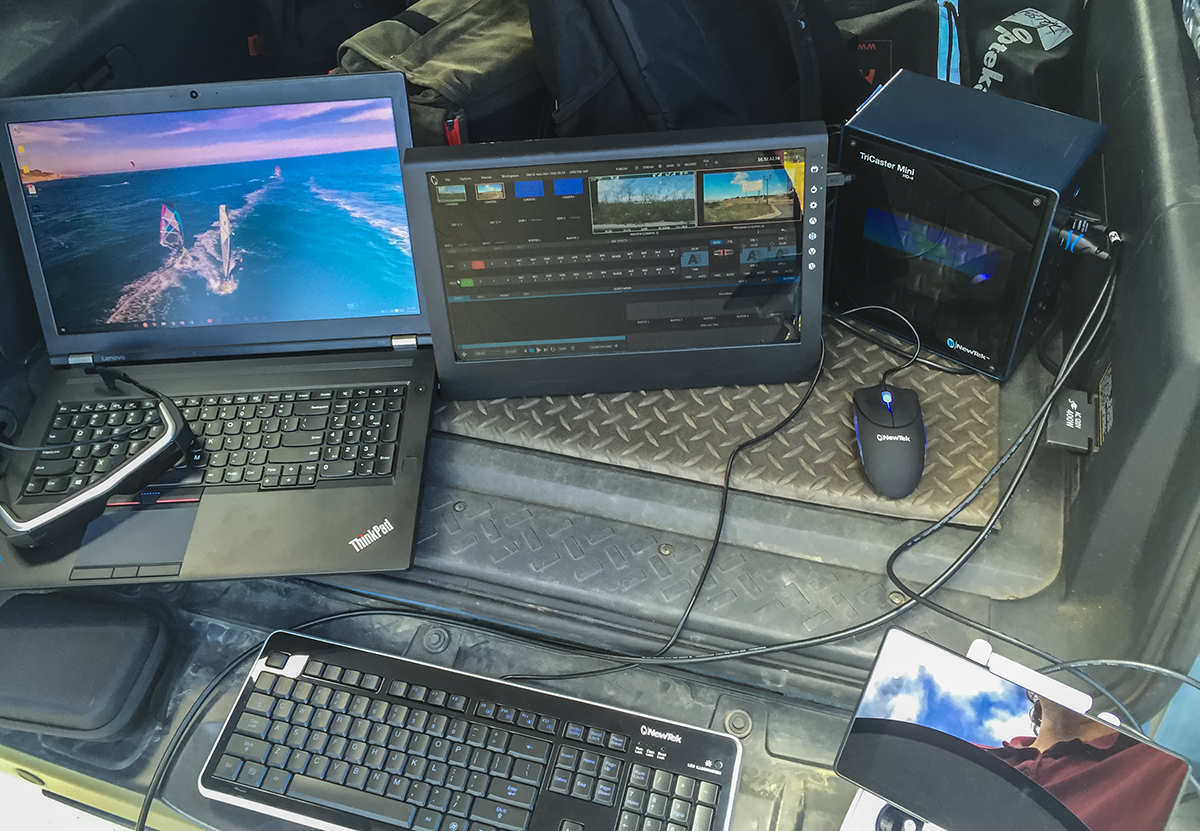Live Remote Video Production in the Field with the TriCaster Mini
By Jim Bask
By Jeff Foster
While many of you may be using the TriCaster Mini as a portable TV production studio in your business, school or in remote locations where you can easily access AC power and a network connection, there are times where you need to be able to work in a really remote location and record your program or uplink it to the web directly from your vehicle.
Since I’m working a lot in the UAS (Unmanned Aerial Systems) or “drone” industry as a commercial operator and trainer, I’m often asked how one might capitalize on some of the newest streaming HD capabilities of today’s prosumer drones. As one of my friends and colleagues in the industry, Eric Cheng, formerly with DJI accomplished in 2015 by taking a couple of their Inspire 1 drones to the volcano in Iceland and were able to live stream an HD video signal to ABC’s Good Morning America live broadcast but that required a great deal of hardware and technology.
But not everyone needs to send a satellite feed to a major TV network to accomplish a similar style live broadcast production in the field. With a simple small production setup out of the back of your van or SUV, you can put together a modest yet professional system that can accommodate up to 6 cameras and or HDMI video feeds from your drone’s controller.
Basic Remote Production Setup
We first experimented with a remote studio setup in 2014 for a live broadcast drone workshop on CreativeLive where a TriCaster was used in the tent and the multi-cam production was fed to it, along with the FPV feeds through converter boxes. It was a crude setup, but it mostly worked.
With today’s advanced technology of the TriCaster Mini and HDMI capable cameras and devices, the setup is much more streamlined and practical to use with prep time taking only minutes.
All you will need to start with a simple setup to capture and record a program to your TriCaster Mini in a vehicle with an AC inverter installed that is accessible to your remote shooting location where you can plug in your equipment and set up your production from there. This must be a hard-installed inverter of at least 400W and not one of those 100W inverters you plug into your auto adapter/cigarette lighter. In my tests, I ran the TriCaster Mini, LCD monitor and the power brick for my Lenovo P70 portable workstation all off the single outlet for over 2 hours on just the battery in my Toyota FJ alone and didn’t have to run the vehicle at all (your mileage may vary, of course).
You can also use a backup power supply for a short production, such as the 400W Anker PowerHouse120,000mAh which is a silent alternative to running a portable power generator – especially if you’re doing any sound recording or interviews.
You may also be at a location that actually has power available to you with a long extension cord, such as at a park or near a barn that will provide you with what you need all day.
With the TriCaster Mini and an LCD monitor powered by your desired source, you can input up to 6 HDMI devices, including camcorders, DSLRs, GoPros and even the live FPV (First Person View) video feed off your drone’s receiver or radio controller.
You can then mix and record your program direct to disk on your TriCaster Mini and then transfer it to the Web later or use one of many different live broadcast solutions such as a Teradek or LiveU through a 4G packet (I’ll get into that in more detail in a bit)…[continue reading]



